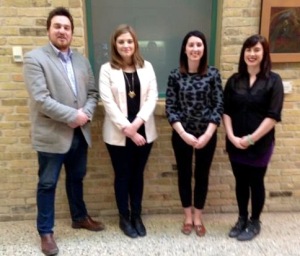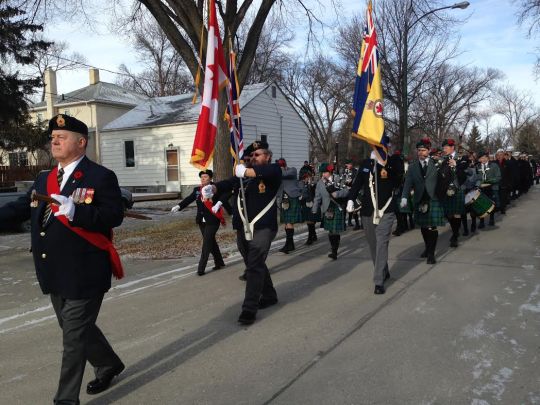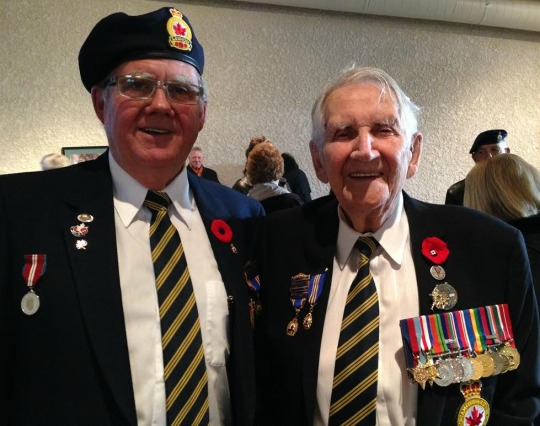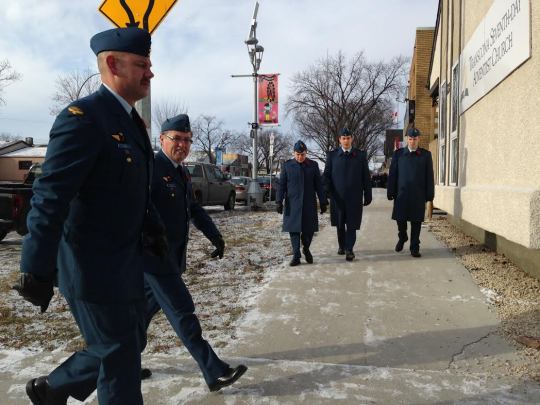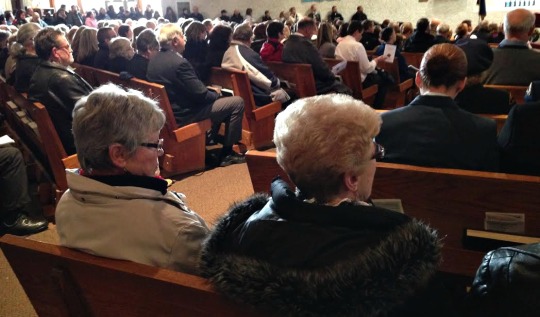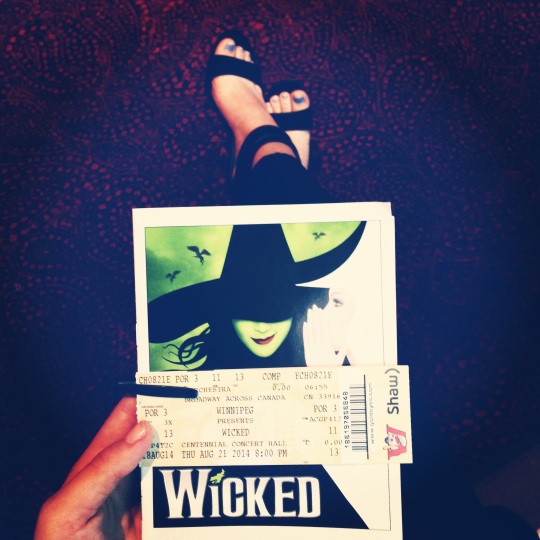Category: ajvfield
A beautiful life
I think it’s fair to say: I’m the happiest and healthiest I’ve ever been in my adult life.
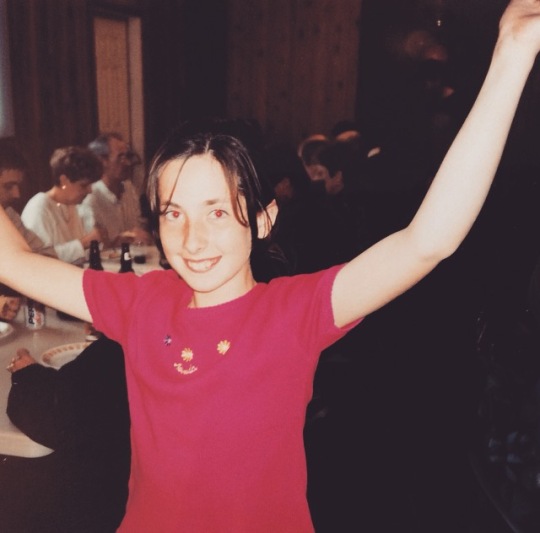
Yippeeeeeeee!
And that’s a long time. I’ve endured seven whole years of adulthood, and I’m just starting to learn how to be healthy.

Freezing, post-election on the streets of Yorkton, talking to the people. What I moved 5 hours away from home to do, and what I love.
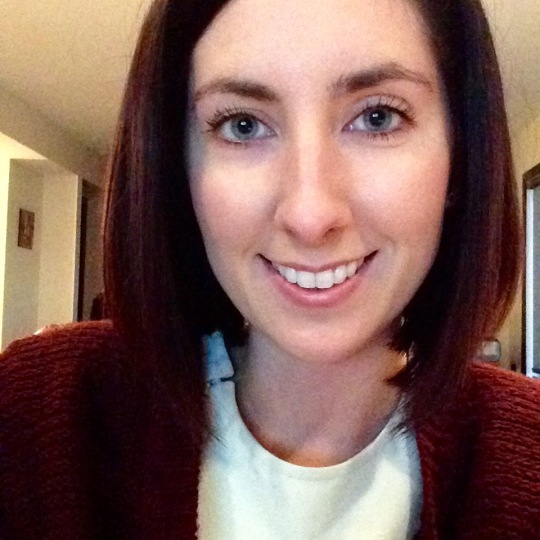
Happy, healthy me.
Rural health care needs help
Funny story: today I won an award (I’ll give you some background information).
Every year, the Eric and Jack Wells Foundation gives two first-year and two second-year students awards for excellence in journalism. We’re all encouraged to submit work we’re proud of, and so I did.
About a month ago I wrote an article about the poor state of rural emergency rooms. It was a difficult story to delve into in 750 to 1,000 words, but I did my best to do it justice.
My teacher, the incomparable James Turner, told us if we submitted work we had to dress nice, because there would be photos afterward. This morning I made sure I had my nice maroon blazer ready to go.
When 11 a.m. rolled around and it was time to go to the award ceremony, I opted not to go grab my blazer because I honestly didn’t think I was going to win.
When they called my name I did the most Ashley thing ever, and let out an OH NO. I was not at all prepared to deliver a speech, so I nervously thanked my teachers and the foundation for recognizing my hard work.
But honestly, the award is so much more than money or a certificate. As I wrote in a previous post, being surrounded by so much talent is difficult sometimes. Self-doubt isn’t something I’m proud of, but I can’t lie, it exists.
So I’d like to thank my teachers and the Eric and Jack Wells Foundation not only for giving me this award, but for reminding me that I am good at what I do. As I mentioned in my speech, I’ve noticed an improvement in my work, not only from the start of this program, but even from a few months ago. In Creative Communications, we’re constantly encouraged to push ourselves, so as a writer, I feel like I’m always learning and growing. There’s nothing quite like others noticing that.
Now for the good stuff. Here’s the story that got me this award:
Rural health care needs help
Winnipeg is home to just over half of all Manitobans, but more than 75 per cent of all physicians work there. Despite the provincial government’s plans to improve the state of rural medical care, the province still struggles to provide the care necessary for people who don’t live in its capital city.
Seventeen of 64 hospitals in rural Manitoba had emergency room suspensions in 2012. The emergency room in Vita temporarily shut down due to a shortage of doctors in October 2012, but it never re-opened. Beausejour residents petitioned last year to get doctors available at all hours, yet that hospital still remains on-call. And Lakeshore General Hospital doesn’t have a doctor as of late last year due to a doctor shortage, announced the Interlake-Eastern Regional Health Authority.
These are only a few examples.
Today, there is no emergency room in Birtle, MB. The town doesn’t even have a medical clinic anymore. Now, the only medical facility in the town of approximately 1,300 people is a nursing home. For emergency care, residents need to travel at least 20 minutes to Russell, but depending on the day, they may need to drive an extra 10 to Shoal Lake. Neither of those hospitals has a fully functioning ER, either. They have nurse-triage clinics, where a doctor will be called in if necessary.
Marc Simard was competing in a quad derby in Birtle last summer when his quad rolled on top of him. After complaining that his ribs were broken, an ambulance took him to Shoal Lake, where there was no doctor on staff. He received painkillers and X-rays from nurses. They called in the doctor at around 8 p.m. when they suspected internal bleeding.
“[The doctor] wasn’t happy to be there, it was very evident,” said Simard’s wife, Regan Simard. “He kept checking his watch and looking at the clock, kind of just annoyed at the situation.”
Her husband was scheduled for a CT scan at the Brandon Regional Health Centre the next morning, an hour and a half away. The doctor advised Simard’s husband to stay in Shoal Lake overnight, and for her to go home. But in the middle of the night her husband called, begging to be sent to Brandon.
“They kind of just shook it off. So I got there, and when I walked in I could hear him screaming,” she said.
The 100-pound woman strained to lift her 225-pound, six-foot-three-inch tall husband into their truck, and then raced down the highway to Brandon in record time. He was in surgery within half an hour.
“The care he received in Brandon was extraordinary and I can’t say a bad thing about them. Shoal Lake, on the other hand, I have nothing good to say,” said Simard. “They didn’t take his care seriously.”
At Hamiota Health Centre, Charity Martin said things aren’t much different.
Her grandmother awoke one morning last fall unable to eat without vomiting. The next day, the 85-year-old was so weak from not eating she decided it was time to see a physician. Despite that, she was not able to get immediate care.
“She called the hospital, but they said that they had no doctors on-call and to phone a help line,” said Martin. “While on the phone with them, they said to call 911 if it was an emergency. It seemed as though no one wanted to help her. We were more than willing to drive her to a doctor, but she had to wait until Monday to visit the hospital.”
“Our doctors in the area are getting worn out. And then the ones we do have are too tired to work.”
Aaron Dubyna is in his third year of medicine at the University of Manitoba. He had training in rural Manitoba and enjoyed it, but he said many people don’t understand doctors are also people with lives, interests and families outside the hospital.
“Each physician can only work so much,” said Dubyna. “My father is also a physician and often worked 70 to 90 hours in seven days. I don’t think it’s fair to expect physicians to work double a normal person and sacrifice their families and their own sleep and health.”
Student loan rebates and grants are both part of the provincial government’s plan to entice young physicians to start their career in remote and rural Manitoba communities. In its 2011 Economic Action Plan, the Government of Canada also announced it would invest around $9 million each year to forgive a portion of student loans for family doctors and nurses who work in rural communities.
“Many of my classmates intend to work in rural Manitoba after the completion of their training,” said Dubyna. “The incentives for young doctors to work in rural Manitoba are excellent.”
But for Dubyna, who plans to specialize in surgery, most operating rooms are in Winnipeg.
“I would be willing to work in a rural centre that has operating suites in their hospital. In fact, Brandon, Selkirk and Winkler all have new facilities I would be happy to work at,” he said.
Dubyna has one final year and then five years of residency. Although rural communities continue to struggle for proper medical care, he has a positive outlook on his future career in Manitoba.
“Overall, I think that Manitoba health is heading in the right direction to ensure adequate numbers of physicians at all sites in rural Manitoba,” he said.
At the end of the day, our province needs to find a balance between what the patients need and the care doctors are able to provide.

hello again
I would advise anyone who aspires to a writing career that before developing his talent he would be wise to develop a thick hide.
— Harper Lee
I promised myself that when I clicked on the ‘add new post’ icon, I would eventually be clicking ‘publish’ once I was finished typing what I had to say.
You see, I have about 20 or so drafts sitting in my posts folder. They are all posts I at one point or another felt I needed to share, but I didn’t. It upsets me more than you know.
When I first started this blog over three years ago, it was because I enjoyed writing. Even if nobody was actually reading my words — besides my family and other random bloggers — I didn’t care. It was just nice to say what I had to say in my own little corner of the Internet.
I used words like RAD (maybe a bit too often) and I poured my heart out about women I loved. I didn’t care what people thought — okay, maybe a little — but I didn’t let it censor me.
For some reason though, lately I’ve been questioning everything I write down. Even that sentence right there I wonder, should I be admitting this?
Sure it’s made me a better editor, but at what cost? Scrutinizing everything I put to paper has become tiresome. Questioning what everyone else will think is just silly. Yeah, maybe my older blog posts weren’t going to get me my next big gig, but they were my words. They were thoughts I felt I needed to share, and that should be enough.
I don’t know when or why this all started, but I do know a few things: being critiqued on my creativity for the past year has been challenging. Being surrounded my such talented people has made me analyze my own skills through a magnifying glass. Being so totally objective has left me a little lost.
I need to stop censoring myself and believe in me again. When I go back and read old blog posts, they make me smile because I was carefree. I can specifically remember sitting at my old Toshiba laptop in my shitty old apartment and the satisfaction I got from clicking ‘publish.’ I hate to say it, but when it comes to this blog, I haven’t felt that way in a while.
People always say, to become a better writer you need to write. So here’s to writing for the fun of it. Here’s to writing stories I can look back at and smile. And here’s to being honest and saying whatever the hell I want, because these are my words and this is my blog.
To gain your own voice, you have to forget about having it heard.
—Allen Ginsberg

PR&J — like PB&J, get it?
So if you don’t already know, I’m in a radio class where every Tuesday at 1 p.m. we put on a full newscast. It’s called The Rundown, and every week we have a different role. The first week, I was live on location reporting about RAW: almond’s grand opening. The second week, I did a feature story on high sodium levels in restaurant food items. The third week, I reported on all the top headlines of the day, and then last week, Bronwyn Fenn and I made a podcast!
I must admit, I had a blast. For our show, PR&J, we dissected the top headlines of the week — Last Week Tonight with John Oliver style — from a PR and journalist’s point of view. Clever name, eh?
We both agreed we would continue to do the weekly podcast if only we had the time.
Interesting timing too, because I’ve noticed more than ever people are getting into the world of podcasting. My boyfriend and my friend have their own podcast, The Intelli-Gents, my favourite San Diegan blogger recently started podcasting, and everyone and their friend seems to be talking about the Serial podcast (which I inevitably started listening to as well).
And here I was wanting one of my own. I’ve tried on various occasions to get into podcasts, but I failed each and every time (I admit, If I had a phone adapter thingy for my car, I would probably be super into them). I can’t seem to tune in for an hour-long show without zoning out, and at that point I may as well just stop listening. Serial is the closest I’ve come to actually getting into a podcast, and even that remains a struggle.
I wanted to know how some people do it, and what it was about this unique platform that has so many people talking. So, I sat down with a local podcaster, Matt Moskal, to chat about his show, The Supporting Act, and why he so frequently tunes in.
The podcast revolution
How more people than ever are tuning in
Whether you’re into in-depth conversations with your favourite celebrity, learning random facts or dissecting each and every episode of the X-Files, podcasts pretty much cover it all.
Matt Moskal listens on a daily basis and creates his own weekly podcast. The Supporting Act Podcast was voted Favourite Local Podcast in The Uniter 30 this year.
“It’s my reason for talking to people some days, it’s a social experience,” said Moskal. “Also it’s fun to take two hours out of your day and put on the head phones and open up. It’s like therapy.”
Moskal, who has a degree in journalism, started listening to podcasts in 2010 as a way to enjoy his favourite CBC radio shows without having to listen to everything in between.
“They’re all I listen to,” said Moskal. “I don’t think I’ve bought an album in a while, I’ve just been listening to podcasts.”
Many people have done the same. Each year, the number of people who tune in to podcasts has grown. It jumped from 11 per cent in 2006 to 30 per cent in 2014, according to a report compiled by Edison Research and Triton Digital.
“Once the NPR [National Public Radio] vault got opened, that’s when things got intense,” said Moskal. “That’s when I realized that you can have something journalistically sound but light-hearted, and you can also have something just completely goofy but somehow manages to hit all the notes that a journalist should in a conversation.”
But it wasn’t until 2012 when Moskal really got into the world of podcasts, subscribing to WTF with Marc Maron (a comedian who talks with other comedians), Nerdist with Chris Hardwick (a TV host who interviews celebrities), and Comedy Bang! Bang! with Scott Aukerman (an improv sketch show that got so popular it now has a TV show). In fact, that’s when a lot of people really starting downloading and subscribing, too. Podcast subscriptions through iTunes reached one billion in 2013, according to a Sept. 2014 article by the Washington Post.
Instead of creating broad content that appeals to a wide variety of people — like the business model of old media — podcasts are very niche. There are podcasts for book lovers, movie fanatics, video game nerds, historians and jocks alike. You name it, there’s probably a podcast for it.
Along with how directed podcasts can be, Moskal said he enjoys how the host can delve deeper into a subject and have longer, intimate conversations with guests.
“Marc Maron once famously said, ‘You can’t hide from somebody for a whole hour,’ when he was talking about his show. And you can’t,” said Moskal. “By the end of that hour, some degree of truth will come out of that person, and that’s something I wasn’t able to get in journalism school or doing campus radio.”
Moskal also said a big reason podcasts are popular is because of the hour-long format. If listeners don’t have a full hour to dedicate to a show, it allows them to pick up where they left off. He also said it’s not trying to get from point A to point B too quickly — like most shows streaming live over the airwaves.
“It takes a long deep breath in a medium that traditionally takes very short bursts of breaths,” said Moskal.
Dan Vadeboncoeur, a Red River College radio instructor and the creator of the Manitoba Podcast Network, agreed. He said his favourite aspect of podcasts is the convenience to listen whenever he wants.
“We PVR TV shows to watch them when we want to. We stream movies and TV from Netflix when it’s convenient for us. We stream music playlists on Rdio and Spotify when we find it convenient instead of listening to the radio. As a whole, we are not beholden to broadcast schedules anymore, and podcasts fit right in with that,” said Vadeboncoeur.
Not only are podcasts becoming more mainstream — Saturday Night Live recently did a Serial Podcast parody, and HBO’s Girls character Hannah listens to This American Life — but competition is growing. Stitcher, a podcast streaming app, grew from 5,000 available podcasts in 2011 to 18,000 in 2013. So not only are more people listening, more people are creating.
“Our local [podcast] community is growing,” said Vadeboncoeur. “More and more people want to start their own podcasts. At Comic Con last fall we had tons of people wanting to know how to do it and looking for instruction on the subject. I would guess that there are close to 30 locally-produced podcasts that I know of.”
As for Moskal, he said creating content is therapeutic and pressing ‘submit’ and seeing his artwork on his iTunes playlist or his podcast app is a phenomenal feeling.
“You feel present even if you have a limited audience. You’re a podcaster. You’re part of the game.”

Paints and Pints
I recently caught wind of a new artsy thing here in the city: Paint Nite. It’s an event — a franchise event, actually, which originated in Boston three years ago, eventually making it’s way here — where people can “Drink Creatively” at different bars across the city.
It’s a pretty neat idea, considering I’ve always been an advocate for painting and being creative, whether you think you’re a “painter” or not.
I spoke with the woman who owns Paint Nite Winnipeg, Manda Brownrigg, and she said she saw a need for the event because people are so busy they forget to be creative. It’s so true. I like to write about making time for what you love, but I’ve struggled with that myself this past year. It’s sad to think people need to pay $45 to go out to get their creative juices flowing, but I suppose it’s better than not being creative at all. I applaud Manda for at least providing a new option for creativity. It’s definitely something more mainstream that I can see a lot of my “non-painter” friends actually doing.
Here’s a story I wrote about Paint Nite Winnipeg, but if you want to see the event for yourself, check out the TV version here. (Skip ahead to 32:00 for the story).
An event that encourages embracing your inner-artist while sipping on some cocktails has made its way to Winnipeg.
In a room full of women, Colin Epp, the only man, is hard at work on his masterpiece. It’s date night for him and longtime girlfriend Victoria Markstrom.
“It was my idea, one hundred per cent,” said Markstrom.
“But I’m on board for anything,” said Epp. “I’ll try absolutely anything once.”
The pair chose to check out Paint Nite Winnipeg, a franchise event new to Winnipeg. By the time they’re done for the evening, they will have two new paintings to hang up at their cottage.
“We’re both in sciences, so it’s nice to be creative once in a while,” said Markstrom.
“In our day-to-day jobs, we just don’t do those kinds of things, so yeah, it’s nice.”
Paint Nite Winnipeg made its debut in October 2014. It’s an event that happens four times a week in different venues across the city. So far Barley Brothers, Saffron’s and The Good Will have held the event.
For the $45 ticket, you get an apron, paints, brushes, a blank canvas and guidance. An instructor will walk you through the evening, telling you which brushes to use, but insisting you make the painting your own.
“Anybody can paint,” said Manda Brownrigg, owner of Paint Nite Winnipeg.
“Everybody comes in here and they start with, ‘I’m not creative, I can’t paint stick men, this is not my thing, don’t expect too much from me,’ but every person leaves here with this thing that they created. They’re impressed with themselves and they’re proud.”
Brownrigg said it’s important to be creative in our busy day-to-day lives, because we often neglect our artistic sides as adults.
“We lose track of that awesome childish artisticness, where we’re just happy to have made something, we don’t even care if it’s good,” said Brownrigg.
At Paint Nite, you’re asked to check your self-doubt at the door, and to create your own artwork no matter your skill level.
“Repeat after me,” said Brownrigg over a wireless headset. “I will not say the words, ‘My painting sucks.’”
Two Bostonians created Paint Nite back in 2012. The slogan, “Drink Creatively,” encourages paint and pints. Even though it’s only been in Winnipeg for a few months, tickets sell out fast — right now you’re looking at about a two-month wait.
Paint Nite Winnipeg is currently a one-woman show with Brownrigg the whole event. But she is so busy she’s looking to hire artists to help her expand.

New addition to a Manitoba tradition
Considering the Festival du Voyageur is just three days away, I thought it would be the perfect time to share this article I wrote for The Projector. There’s some new additions to the outdoor festival this year, and I honestly can’t wait to go.
Come February, the temperatures will likely be cold and the homework will likely be piled on thick, and according to Manitoba’s beloved winter festival, that’s the best time to head outdoors.
For its 46th year in a row, Festival du Voyageur (FDV) returns to St. Boniface from Feb. 13 to 22.
This year, the festival will feature all the classic winter activities, like horse-drawn sleigh rides, slides and snowshoe workshops, but it will also introduce something new.
Fort Gibraltar — the festival’s main hub — will be open late, from 9 p.m. to midnight, to introduce the brand new Bar Gibraltar. Fort Gibraltar would normally be closed at 9 p.m., so the extra hours in the evening give party-goers a place to dance along to music, enjoy some drinks outdoors and well into the evening.
“I think the Fort Gibraltar bar is exactly what the people need,” said Barney Morin, a first-year Creative Communications student and a historical interpreter for the FDV. “Normally the Fort closes at 9 o’clock, you sort of miss that historical aspect.”
Morin, 23, has been attending the FDV since elementary school, but has been an avid festival-goer for the past five years. He dresses up like a voyageur and teaches visitors the rich history of Manitoba.
“Out of all the things that are good this year — 130 bands playing, 100 are local — the bar is going to be the highlight,” said Morin.
Ginette Lavack Walters, executive director of the festival, said the outdoor space at Fort Gibraltar is going to now be programmed with fire jugglers, fire pits, voyageurs singing songs, DJs, and of course, Bar Gibraltar.
She said although many people would rather hide from the cold and their homework, it’s important that they come out and experience the festival.
“I’ve been through university, and I’ve done that reading week, and sometimes you just need a break,” said Lavack Walters.
“You need to change your environment and you need to change your frame of mind. A great way to do that is to grab a couple of friends and come out.”
More than 130 musicians or musical acts of all different genres will play during the 10-day festival.
“If you want something that helps to kind of get you loosened up and not thinking about everything else that’s stressful in your life, Festival is a great way to do it,” said Lavack Walters.
Other FDV events include the 33rd beard growing contest, a mascot competition and jigging and fiddling competitions.
A costly broken system
This week in journalism, the CC Spectator did some crime and courts reporting. For this issue I was the columnist, and here’s what I wrote:
Our current justice system is broken, and aboriginal men are the ones paying the price.
At Stony Mountain Institution just outside Winnipeg, 65 per cent of inmates are aboriginal. That’s a staggering number compared to Manitoba’s general population, where aboriginals make up about 10 per cent, according to the 2013 National Household Survey.
Consider some things we do know: many aboriginals are still reeling from the effects of the residential school system. Many are familiar with the child welfare system and know the effects of being dislocated. Many know someone who has committed suicide or someone who has substance abuse issues. And many struggle with cultural identity, lack formal education and live in poverty or poor living conditions.
It’s no wonder many aboriginals wind up walking through the revolving doors of prisons and provincial jails.
A troubling study released last summer by the Correctional Service of Canada proves that growing up in these conditions is bound to have a lasting, harmful effect.
Half of federal offenders surveyed said they had been through the child welfare system. Sixty one per cent had a family member who had also been in prison. Ninety six per cent had substance abuse issues that related to the reason they were in prison.
It’s almost as though these circumstances are all these aboriginal men know. When they serve their time and are free, the odds of them staying out are slim.
The same study also found that aboriginal offenders are more likely denied parole, and they returned to prison more often.
In just 10 years, the federal inmate population increased by 17 per cent, while the aboriginal inmate population grew by 47 per cent.
It’s an endless cycle. It needs to be fixed to protect the futures of young aboriginal men, who are walking through those revolving doors in rapidly growing numbers.
Many Canadians believe offenders deserve harsher sentences, and they aren’t satisfied when offenders are released back into the public. On the other side of the coin, they complain about how much of their money goes toward prisons.
People have to stop simply brushing off the fact that the majority of Stony Mountain’s offenders are aboriginal men.
It’s time to open our eyes to the real problem, namely structural racism. Nothing is going to get better until we stop blaming these men for circumstances out of their control.
It’s time we re-examine current practices in the justice system and find a way to fix them. The issue is certainly complex, but most of all, it’s sad.

Remembrance Day in photos
One of my favourite assignments last year was the Remembrance Day assignment.
I talked to my mom’s cousin, who was sent to Rwanda after the genocide on a peacekeeping mission. It changed him, sure, but he assured me he wouldn’t change anything about his experiences if he could.
He expressed how important Remembrance Day is to him, and his words reminded me how important Remembrance Day should be for all Canadians.
Most importantly, the assignment reminded me that everyone has a story worth sharing.
Today I spent the morning in Transcona for the Royal Canadian Legion Branch No. 7’s Remembrance Day Parade and Service. I met some pretty great people, and I tried my best not to complain about the cold.
Here are some of the many photos I took as part of this year’s photo essay assignment.
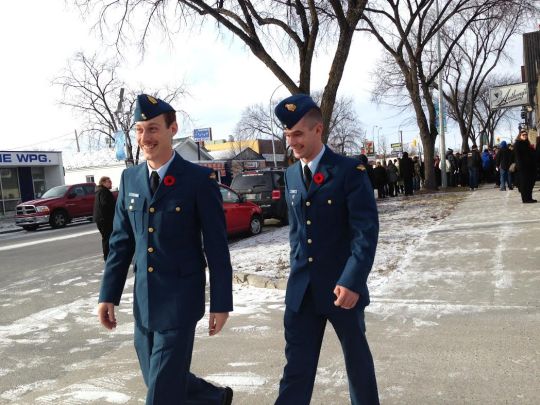
Two Auxiliary Cadets make their way to their post for the Remembrance Day Parade, which started at the Royal Canadian Legion Transcona Branch No. 7.
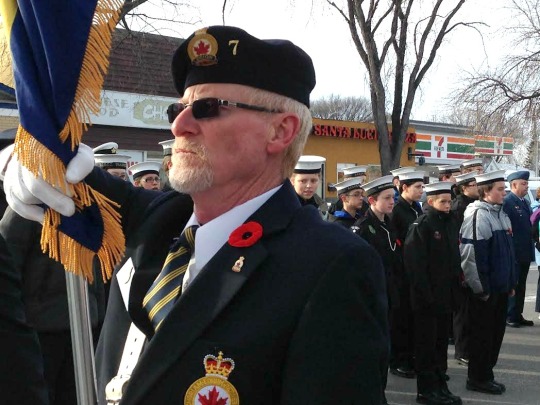
A member of the Royal Canadian Legion’s Transcona Branch No. 7 Colour Party stands and waits for the parade to begin.

A woman claps for those marching in the parade as they arrive at the Blessed Sacrament Parish at 710 Roanoke Street.
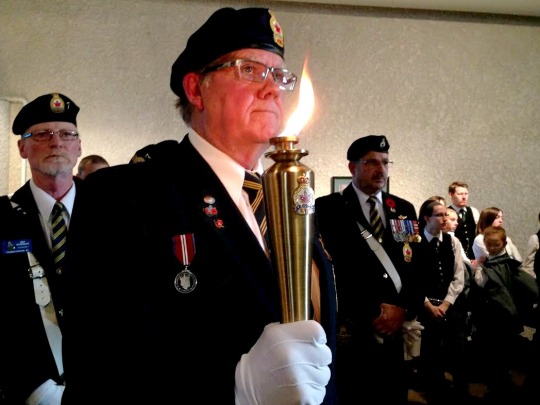
Peter Martin marches with the torch for his 93-year-old father Paul Martin who served in the Second World War.
***Here are a few others not included in the assignment, but ones I’d still like to share.
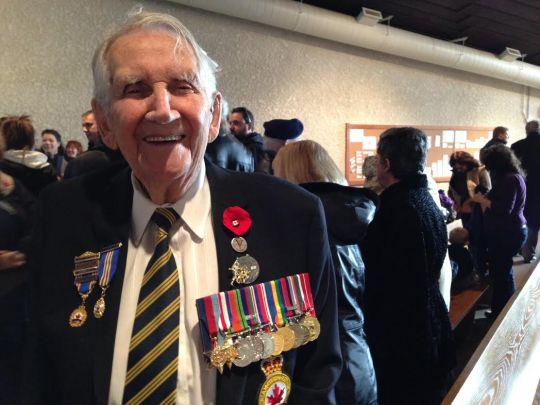
Second World War veteran Paul Martin, 93, shows off his badges at Transcona’s Remembrance Day Service.
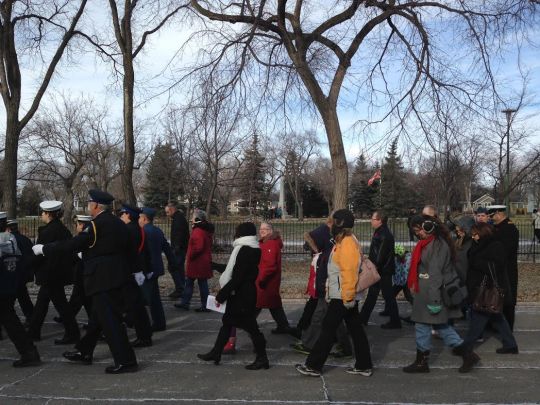
Those marching in the parade walk past the Memorial Park Circle on their way back to the Royal Canadian Legion.
All photos were taken with my iPhone 5C

#exploremb

My take: Wicked
Okay, so if you read my previous post, behind the scenes of Wicked, you know that I had the opportunity to see the show. It was a dream come true. I wrote a little piece on my thoughts, and here it is!
My first time was Wicked
It all started with Glee; I must admit I’m a huge fan. Ever since I found out Idina Menzel — Rachel Berry’s mom on the show, and whose name John Travolta majorly screwed up at the 2014 Academy Awards — was the original Wicked Witch of the West in the Broadway show, I became a little obsessed.
I must also admit I have never been to a musical or Broadway show before, unless you count high school musicals, but for the sake of this review, let’s not (as much as I loved my school’s rendition of Joseph and the Amazing Technicolor Dreamcoat).
I fantasized about the day I would see my first show, and naturally, I wanted it to be Wicked. There will always be a place in my heart for the Land of Oz, and Wicked: The Untold Story of the Witches of Oz has been Broadway’s highest grossing show for nine years in a row right here in North America.
The musical was written by Winnie Holzman, with music and lyrics by Stephen Schwartz, all of which was based on the 1995 novel by Gregory Maguire. If you’ve ever wondered why the Wicked Witch was so darn wicked, well, this musical explains it.
Thursday Aug. 21 was the night. The Centennial Concert Hall was packed with people, many eagerly waiting in line to purchase their new Wicked merchandise. Upon arriving, I was told that on this particular evening, the standby actress, Alyssa Fox, would be playing the lead role of Elphaba (a.k.a. the Wicked Witch of the West).
I took my seat and anxiously waited for the show to begin. A giant metal dragon sat perched overhead, and a curtain with a glowing green map of Oz hung in front of the stage. When the lights dimmed and the curtain went up, I was completely giddy.
The show started off where the classic 1939 film, The Wizard of Oz, left off. Glinda hovers above Munchkinland as a Munchkin below cries, “The wicked witch is dead!” This is also when another asks the good witch about Elphaba, and when Glinda recounts their tumultuous past, the show begins.
The two-and-a-half hour show definitely had its star performers and stand-out moments, but one thing I was not expecting was to be constantly laughing out loud. For such a sombre story, characters like Mme. Morrible and Glinda had the audience guffawing — and loudly, might I add — throughout the entirety of the show. Kathy Fitzgerald seemed born to play the role of Mme. Morrible, and Kara Lindsay shone as Glinda.
I was very pleased with Alyssa Fox as Elphaba, and at the end of the first half, when she ascended above the stage belting out “Defying Gravity,” I most definitely shed a tear. Her voice was incredibly powerful, and after watching Menzel perform the same song time and time again on YouTube, I can say that I was certainly not let down.
What did let me down, however, were the male leads. Matt Shingledecker, who plays Fiyero, delivered a not-so-memorable performance, falling to the wayside and being overshadowed by his fellow leading actresses. And although Oz is a traditionally weak character, Gene Weygandt’s performance left me wanting more.
However, all the good the show had to offer definitely outweighed the bad. The massive backdrops and sets rolled in and out seamlessly, the dancing was consistently synchronized and the costumes were impressive. Costume changes seemed almost effortless — although I’m sure they didn’t seem that way for the actors — switching from Munchkins to college kids in no time. The Emerald City citizens were my favourite: extravagant gowns and suits in various shades of green, which were all very Lady Gaga-esque.
Some other highlights included Glinda and Elphaba’s dormitory scene, in which the audience got a good glimpse at Glinda’s quirky personality; the flying monkeys (of course); and near the end, when the two witches sing “For Good.” The duo had such good chemistry; it appeared as though they were actually two best friends up on stage together, which of course made me cry like my aunt does when she’s watching Dancing with the Stars.
The curtain dropped, and just like that the show was over. I was no longer a musical virgin. A few moments passed and the curtain rose for the finale, where every audience member clapped and got out of their seats. The standing ovation was sweet, but not as sweet as seeing the huge smiles strewn across the faces of the cast members.
My first time was everything I had ever imagined it to be: I smiled, I cried and I laughed a whole heck of a lot. If you ever get the chance to see Wicked for real — instead of on YouTube like the old me — I highly recommend you do. Oz speed, my dear.
